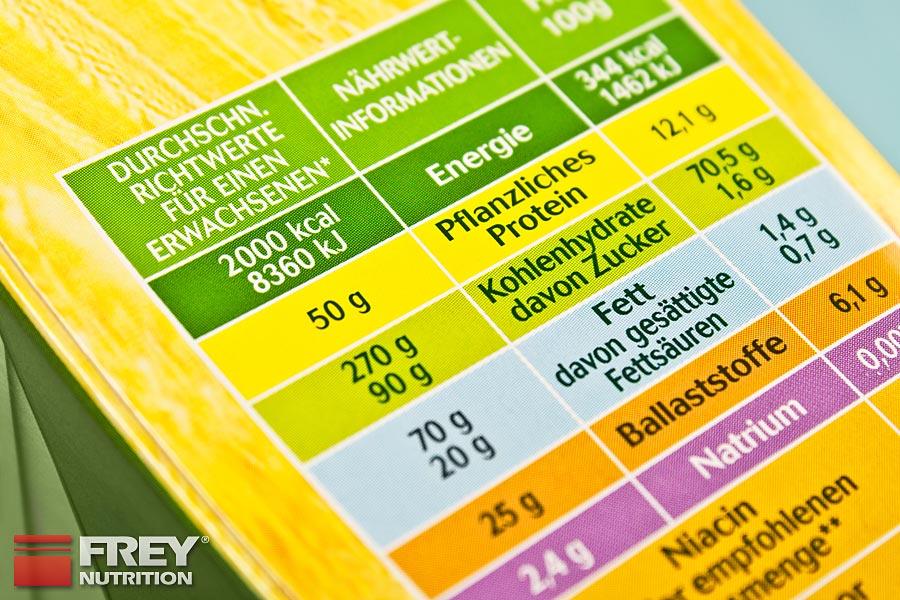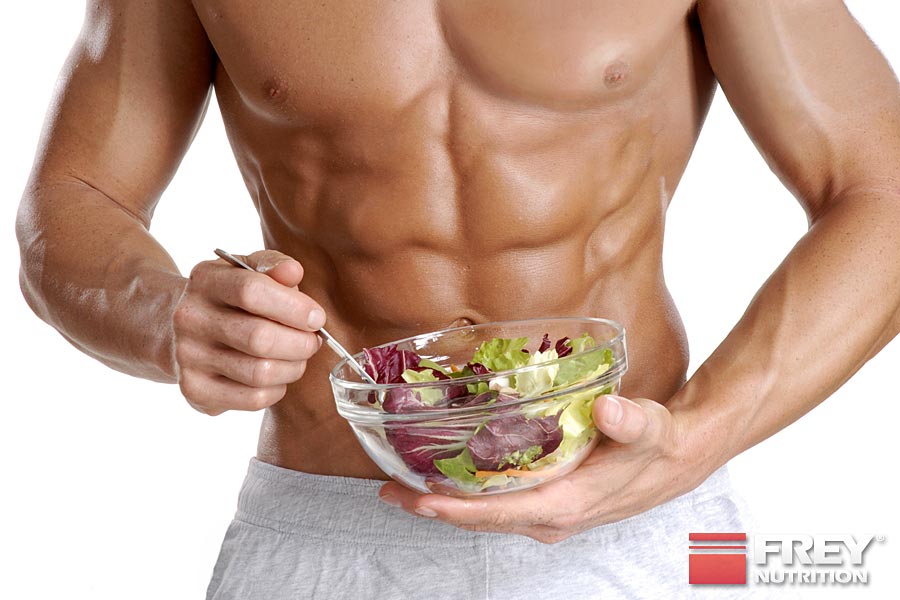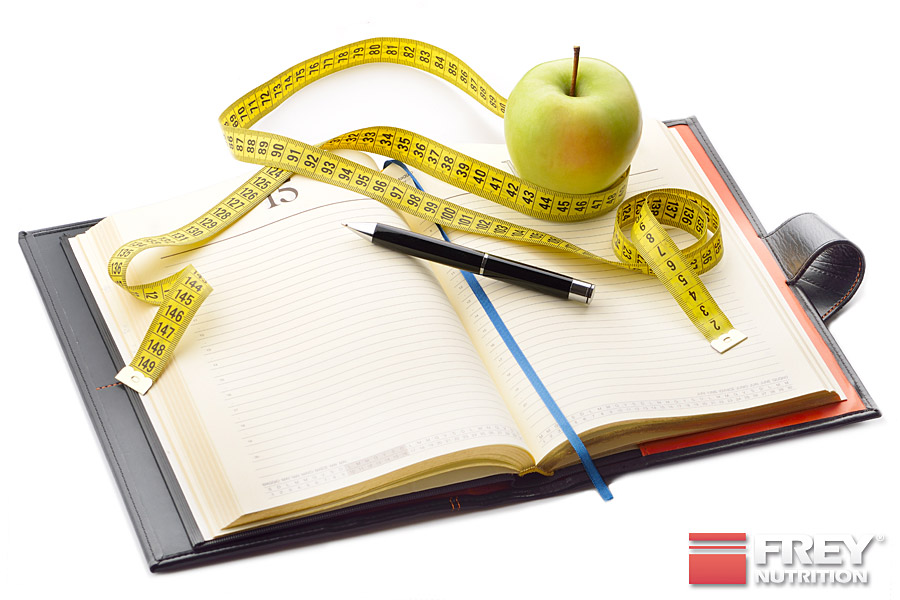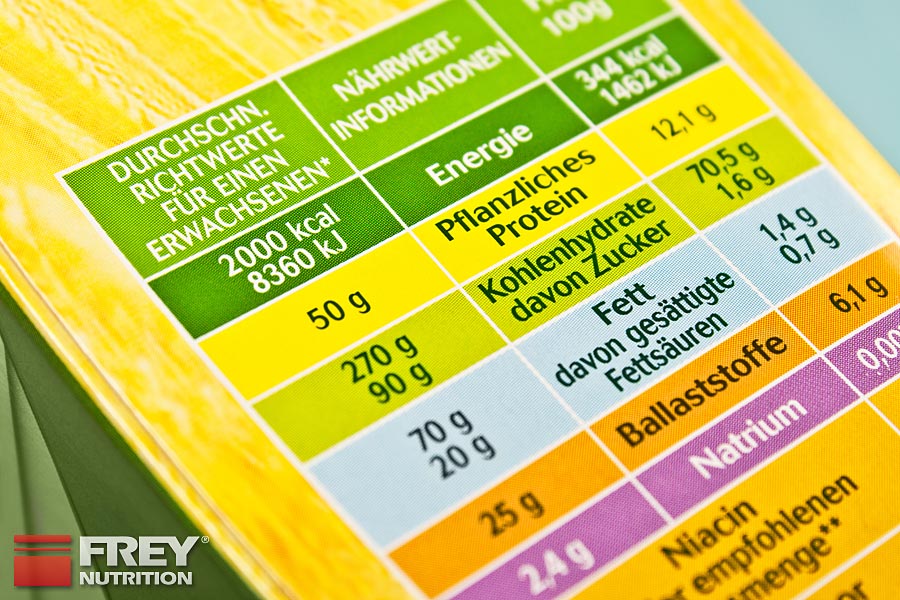THE BASICS OF ENERGY BALANCE
In order to understand the connection between the food components, which will be discussed in more detail later, it is first important to know how high the individual body's energy consumption is. This is the only way to intervene in the nutritional balance in a targeted manner in order to achieve set goals. Calculating and implementing the energy balance is the basis of every successful diet. A person's daily energy requirement is made up of the following factors:
1. BASIC METABOLISM
2. PERFORMANCE TURNOVER / LABOR TURNOVER
3. LEISURE SALES
4. POSTPRANDIAL THERMOGENESIS
5. ENERGY REQUIREMENTS FOR GROWTH
BASIC METABOLISM (MB)
The basal metabolic rate is the energy consumption of the body when completely at rest and at a constant ambient temperature, with the aim of maintaining vital functions such as breathing, metabolism, circulation and body temperature for 24 hours.
It corresponds to the energy consumption per day during 24 hours of sleep. Body type, weight, height, age, hormonal factors, illness and gender influence the individual basal metabolic rate; it also depends on the percentage ratio between muscle mass and body fat. This means that athletes with increased muscle mass use significantly more energy at rest than non-athletes with correspondingly less muscle mass. This is also the reason why athletes respond much better to a diet and achieve success faster than non-athletes due to their increased muscle mass. The basal metabolic rate can be calculated in a simplified way by multiplying the body weight in kg by 24 hours, i.e. the length of a day.
WOMEN:
BASE METABOLISM (BMR) = BODY WEIGHT (KG) X 0.9 X 24 (H)
MEN:
BASE METABOLISM (MB) = BODY WEIGHT (KG) X 24 (H)
Since women have less active mass, i.e. muscle, than men, their basal metabolic rate is about 10% lower.
People who are very overweight have a higher proportion of fatty tissue and less metabolically active muscle mass, which is why the usual formula (see above) cannot be easily transferred. The proportion of fatty tissue must therefore be taken into account when calculating the basal metabolic rate. The following rule of thumb has proven useful and is largely established:
30 KCAL X FAT-FREE BODY MASS IN KG PER 24 H
PHYSICAL ACTIVITY LEVEL (PAL)
The energy metabolism includes the energy that the body uses within 24 hours in excess of the basal metabolic rate. It is influenced by physical and mental activity, heat regulation at different ambient temperatures and regeneration after illness, among other things. The energy metabolism can be increased considerably with additional physical exertion. The PAL value (Physical Activity Level), which reflects the extent of physical activity, is used to calculate the energy metabolism. If you sit in an office during the day and do not move much, you have a PAL of around 1.3 with an average metabolism and normal hormonal conditions. People who do very physically demanding work, such as construction workers, have a much higher value of 1.6 to 2.0.
The PAL values of different activities are classified as follows:
- SLEEP = 1.0
- SITTING OR LYING ACTIVITY = 1.1
- ALMOST EXCLUSIVELY SEDENTARY ACTIVITY = 1,
- MOSTLY SITTING, WITH STANDING ACTIVITY = 1.4
- PREDOMINANTLY STANDING, WALKING ACTIVITY = 1.6
- PHYSICALLY STRENUOUS WORK = 1.8-2.0
Not only professional activities, but also sporting activities have an impact on the energy balance. For example, if you do intensive sport for 60 minutes a day, you increase your calorie requirement by an average of 500 calories. The more muscle mass you have, the higher your calorie consumption will be, as muscle mass is metabolically active and requires energy. A well-trained athlete with above-average muscle mass can easily burn 800 to 900 calories per hour. The value for energy consumption through sporting units is called PAL sport.
Although this is often misconceived, weight training burns significantly more energy than endurance training, as the former contributes to a higher metabolism, which also lasts longer than is the case with cardio workouts.
To ensure that sporting activities are not ignored in the energy balance, the hours per week should be added up and multiplied by an average of 500 calories. This gives you the energy consumption that you burn through sport each week. This value is divided by 7 (weekdays) to give you an average value, which is then added to the total expenditure.
DIGESTIVE LOSS (PT = POST-PRANDIAL THERMOGENESIS)
Digestive loss, also known as postprandial thermogenesis, refers to the food energy that is used up through the digestive process. With a normal diet, it amounts to around 10% per day. However, this amount is greater if the food consists predominantly or almost exclusively of protein, as is correctly recommended in some diets. The increased protein intake leads to an increase in metabolism or a loss of energy that can be up to 20 to 30%. In science, this process is called "postprandial thermogenesis" and refers to the immediate increase in body temperature after eating. This theory is explained in more detail in the chapter on proteins and the advantages are described in more detail.
DIGESTIVE LOSS (PT) = 10%
TOTAL SALES
The total metabolic rate corresponds to the calorie value that is required for a given body weight (GU), taking into account the individual physical activity (PAL), the sports activities (PAL-Sport) and the digestive loss (PT), in order to maintain a constant body weight, i.e. neither to gain nor lose weight.
TOTAL SALES = GU X (PAL + PT) + PAL-SPORT
THE ENERGY REQUIREMENTS FOR GROWTH (E-TARGET)
The energy requirement for growth refers to the additional energy required by the body during growth phases. This can be growth phases as an infant, during puberty or simply the desire to build muscle. For muscle growth in building phases, 500 kcal are generally added to the total expenditure. This creates a positive calorie balance and is therefore the prerequisite for building muscle substance. If, on the other hand, the goal is to lose weight, the total daily expenditure must be reduced by 500 kcal, which ensures a negative calorie balance. This is the first basis for reducing body fat.
ENERGY REQUIREMENTS FOR GROWTH (E-TARGET) = +/- 500 CALORIES
TOTAL SALES WITH TARGET
The total turnover, taking into account the individual target, is therefore made up as follows:
BASIC METABOLISM (MB) X (PERFORMANCE METABOLISM (PAL) + DIGESTIVE LOSS (PT))
+ LEISURE SALES (PAL-SPORT)
+ ENERGY REQUIREMENTS GROWTH (E-TARGET)
A PRACTICAL EXAMPLE
It's about Willi, who wants to know how much energy he needs every day. He is 30 years old and works as an office worker at a desk. Willi is 1.92 m tall and weighs 80 kg. He goes to the gym 4 times a week for an hour. Since he is not particularly happy with his figure and is also underweight, he would like to put on a few kilos of muscle mass. So we have all the information we need and let's get started!
BASE METABOLISM (BME) = 1920 KCAL X (1.2 (PAL) + 0.1 (PT)) = 2496 KCAL
+ 300 KCAL LEISURE TIME EXPLORATION (PAL-SPORT) = 2796 KCAL
+ 500 KCAL ENERGY GROWTH (E-TARGET) = 3296 KCAL
By multiplying his body weight by 24 hours, we get Willi's basal metabolic rate (BMR), i.e. 80 (kg) x 24 (hours) = 1920 calories. For his desk job, we use a PAL value of 1.2 according to the PAL table. The digestive loss (PT) is always the same and is 0.1. Through Willi's 4 hours of exercise per week, he consumes an average of around 300 calories per day (500 kcal/h x 4 training sessions / 7 days per week). Since Willi wants to gain weight, we estimate an energy surplus of 500 calories per day, which gives the following total calculation:
Willi would therefore have to consume around 2800 calories a day to maintain his body weight. To achieve the desired muscle growth, he needs around 3300 calories a day.
On average, young people need more energy than adults, with the highest levels being reached between the ages of 12 and 18, as the body needs more calories during this time due to growth processes and increased physical activity. As people get older, both their basal metabolic rate and their performance metabolic rate decrease significantly. This reduction in calorie consumption begins as early as the age of 30, which leads to a slowing of the metabolism. Since very few people take this fact into account, it is not surprising that almost one in two people in Germany is overweight.
"IF YOU HAVE A GOAL, YOU FIRST HAVE TO KNOW WHERE YOU ARE IN ORDER TO GO IN THE RIGHT DIRECTION." (QUOTE: A. FREY)
If you want to gain or lose weight, knowing your individual energy balance is crucial, because only by specifically manipulating your food intake can you bring about changes in the desired direction. If you have a goal and want to go somewhere, you first have to know where you are in order to go in the right direction. Calculating your energy balance is a great help for this and forms the basis of a weight-loss and weight-loss diet.
POSITIVE, NEGATIVE OR BALANCED?
If the energy balance is balanced, ie you consume exactly as many calories as you use up (so that the daily calorie intake corresponds to the total turnover), the body weight remains unchanged.
If you want to gain weight, i.e. muscle, you need a positive energy balance This should be ensured primarily by an additional supply of carbohydrates and protein. By reducing calories and the associated negative energy balance , the basis for fat reduction is laid. An increase or reduction in daily calorie intake, in terms of total turnover, should not exceed a maximum of 500 kcal per day.
Only after a certain time does it make sense to increase the calorie deviation in a positive or negative direction, above all in order to achieve a stronger building or breaking down effect. The energy balance makes it possible to adapt the diet to the respective goals, which is why it plays a crucial role as the basis of the diet. The jumps in body weight in a positive or negative direction (i.e. the increase or decrease) per week should not be too high. If the weight increases too quickly with the aim of building muscle mass, there is a high risk that a significant part of the weight gain will consist of fat. If, on the other hand, the weight loss is too great, there is a high probability that valuable muscle will be lost in addition to fat. The guideline for weight gain or loss is 300 to 700 g per week. This also effectively avoids health risks that can arise from a too rapid change in body composition. By reducing body weight slowly, the risk of relapsing to the initial position before the diet after the diet is significantly lower. This occurs especially with radical diets, in which body weight is reduced too quickly and too drastically. (Note: the word diet does not only describe the reduction of body weight, but is generally used for a certain type of diet. This does not necessarily mean a reduction diet, but can also refer to a gain-in-weight diet.)
THE ENERGY REQUIREMENT CALCULATION
For an accurate calculation of the total turnover, we would like to refer to the University of Hohenheim, which provides a detailed energy requirement calculation.
Compared to other calculation methods, the energy requirement calculation of the University of Hohenheim provides accurate values under the assumption of a normal metabolism and is very useful for a rapid determination of energy turnover.
However, since weight analysis was primarily developed for non-athletes and additional muscle mass is declared as fat, its transferability to athletes or even competitive athletes is only possible to a limited extent.
THE CALORIE CALCULATION
Counting calories is a necessity for calculating and implementing energy balance and should be done in order to achieve the desired goals effectively and quickly. Without calculating the calories consumed daily, it is impossible to change them if necessary, because without counting calories you have no starting point.
Calculating calories is essential for long-term nutritional planning. The following link also leads to the University of Hohenheim's homepage, to a very comprehensive nutrition table, divided into different food groups with information on the nutritional components, minerals, vitamins and trace elements. So with a little time and patience, there should be no problem determining your individual daily calorie intake.
Once this has been calculated, you can compare it with your daily energy expenditure and adjust it to your individual goal. To do this, it is advisable to count the calories you consume daily over a minimum period of 10 days; this gives you an overview of your own eating habits and allows you to adjust them effectively and purposefully. Without knowledge of your daily calorie intake, which is the basis for nutritional planning, changing your calorie intake with the goal of gaining or losing weight is difficult or even impossible.











